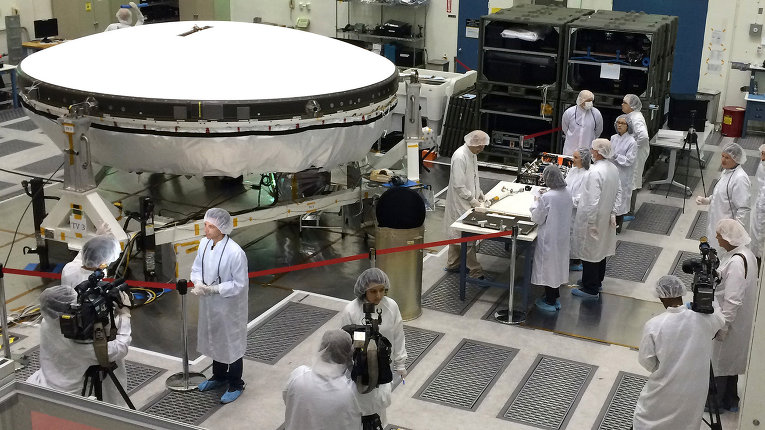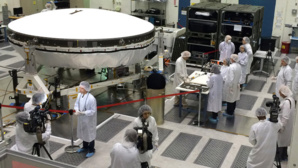On Monday, April 20, specialists from NASA launched the start of the program, which will be aimed to identify the existence of alien life in space. "Climate" service was given the name of NexSS. Its head Mary Voytek told that professionals such as astrophysics, climate scientists, astronomers and planetary scientists will participate in the program. Due to the fact that a wide range of experts will be involved, the large-scale experiment will be brought in life.
Voytek has teamed up 16 scientific teams of astronomers, astrophysicists, climatologists and planetary scientists who are going try to jointly develop an alright definition of where life could exist, as it may look, and how we can watch it from space.
One of the innovations of NExSS program is that in its framework, a broad participation will be taken by climatologists who are currently working on the adaptation of existing models of the Earth's climate to work with exoplanets.
Initially, these modifications will be simple - scientists simply add the ability to change the number of days in a year, the length of day and other simple simulation parameters, but over time they adapt them to work with any rocky exoplanets, not just Earth’s lookalikes.
These models and principles of the search for extraterrestrial life will be prepared by 2018 and to 2020, when space telescopes TESSi and "James Webb", heirs "Kepler" and "Hubble", will be sent up in the space. The power of these telescopes will suffice, as researchers hope, to look into the atmosphere of distant planets and get their full pictures.
Previously, Ellen Stofan, chief scientific adviser of NASA, made a prediction on search of extraterrestrial life.
- I think we will find convincing evidence of life beyond Earth within the decade. And in 20-30 years we will get clear evidence of its existence, - said Stofan during discussions on the search for habitable worlds and extraterrestrial life. She added that the scientists know where and how to look for life, as well as have the necessary technology.
Former astronaut John Grunsfeld, the administrator of group on NASA research’s mission, supported the colleague’s optimism. He believes that the signs of life will be found very soon both in the solar system and beyond.
- I think that all the processes are developing in the same direction in our solar system, whether it's icy moon, Mars or planets nearby stars,- said Grunsfeld.
Water, which is one of the components considered necessary for the origin of life, is possible to find in the solar system and beyond. There are oceans of liquid water beneath the surface of Jupiter's moons - Europa and Ganymede, and the moon of Saturn - Enceladus. Earlier, Mars was covered by ocean too. In the habitable zone, that is, at a distance from the star where water can exist in liquid form, many exoplanets are located.
Voytek has teamed up 16 scientific teams of astronomers, astrophysicists, climatologists and planetary scientists who are going try to jointly develop an alright definition of where life could exist, as it may look, and how we can watch it from space.
One of the innovations of NExSS program is that in its framework, a broad participation will be taken by climatologists who are currently working on the adaptation of existing models of the Earth's climate to work with exoplanets.
Initially, these modifications will be simple - scientists simply add the ability to change the number of days in a year, the length of day and other simple simulation parameters, but over time they adapt them to work with any rocky exoplanets, not just Earth’s lookalikes.
These models and principles of the search for extraterrestrial life will be prepared by 2018 and to 2020, when space telescopes TESSi and "James Webb", heirs "Kepler" and "Hubble", will be sent up in the space. The power of these telescopes will suffice, as researchers hope, to look into the atmosphere of distant planets and get their full pictures.
Previously, Ellen Stofan, chief scientific adviser of NASA, made a prediction on search of extraterrestrial life.
- I think we will find convincing evidence of life beyond Earth within the decade. And in 20-30 years we will get clear evidence of its existence, - said Stofan during discussions on the search for habitable worlds and extraterrestrial life. She added that the scientists know where and how to look for life, as well as have the necessary technology.
Former astronaut John Grunsfeld, the administrator of group on NASA research’s mission, supported the colleague’s optimism. He believes that the signs of life will be found very soon both in the solar system and beyond.
- I think that all the processes are developing in the same direction in our solar system, whether it's icy moon, Mars or planets nearby stars,- said Grunsfeld.
Water, which is one of the components considered necessary for the origin of life, is possible to find in the solar system and beyond. There are oceans of liquid water beneath the surface of Jupiter's moons - Europa and Ganymede, and the moon of Saturn - Enceladus. Earlier, Mars was covered by ocean too. In the habitable zone, that is, at a distance from the star where water can exist in liquid form, many exoplanets are located.






